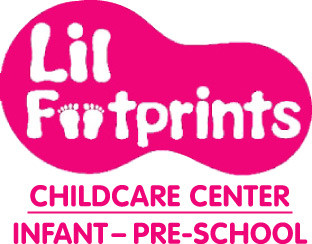
How to Encourage Independent Play in Kids
With social distancing still top of mind, we spoke to experts about how to encourage and facilitate independent play in little ones.
Get kid-friendly activities sent to you!
Get the Best Kid-Friendly Activities
Sent to You Weekly!
Don’t forget that having a child who plays well independently means you are also providing them with their undivided attention sometimes. Give your child at least 15 minutes of your total presence each day where you engage them with songs and books and describe their environment. “A child who feels secure and receives healthy doses of attention throughout the day will more likely engage in independent play,” says Sinyor.
And then just remember to step away so they can run with the fun. At this point completely remove yourself from play either physically (if safe) or psychologically by not engaging in what’s going on. It may be tempting to ask thought-provoking questions and engage in your child’s free play but that can have the opposite of the intended effect and actually interrupt a child’s thought process, Boyle and Teckle add.
Best Toys for Independent Play
There’s the old joke that kids enjoy playing with big boxes more than the gifts that came inside of them. And there’s lots of truth to that. Rees recommends having a few quality and open-ended play objects—they don’t even have to be toys. A collection of oversized cardboard boxes can make for some amazing building materials. Boyle and Teckle also recommend building sets, gears, blocks, and Magnatiles for mini architecture enthusiasts. Plain wooden figurines, stuffed animals, action figures, dolls, and animal figurines all help inspire some make believe. While a basket of various hats or props are perfect for dramatic play.
Boyle and Teckle also encourage some artsy materials like Playdough and creating a designated area for water coloring or paint exploration that is accessible (and acceptable!) without support from a caregiver. It could even mean "painting" rocks with just water and some brushes. And don’t underestimate the thrill of playing outside with water. Simply fill a plastic storage container with water and add animal figurines, droppers, funnels, measuring cups, and more. Kids will know what to do! Just be sure to “carefully curate your toy selection and avoid clutter,” Rees adds. What’s more, look for things that can be used in myriad ways not just in one specific manner. Sinyor says objects kids can twist, move, and manipulate will keep them more engaged than toys with an on/off button or overstimulating activities that involve screens and other electronics
Remember to be Patient
If your child doesn’t make immediate progress with independent play, try to be patient. It can be a major challenge for some children in the beginning. But all children are capable of doing it, Rees says.
“This is why introducing this skill as early as you possibly can could be life changing for your child and the whole family,” say Boyle and Teckle. So remember to start with realistic expectations: 5 minutes at first, gradually building up to 10 minutes, 15 minutes, and then more. Sinyor says an 18-month-old may play independently for 15 minutes while a 2-year-old will spend 30 minutes or more.
“You can help to build up their tolerance level by letting them know you’ll be leaving for a few minutes and then coming back,” Rees says. And try to find the time of day where your child is most amenable to solo play. For many families this is right after a meal or any time your kiddo isn’t going to be hungry or tired, Boyle and Teckle recommend. Then just make sure the activities and toys you offer are age-appropriate and engaging, and be consistent about presenting opportunities for your child to enter that “playing happily by herself” zone.
It’s a good idea to build independent play time into your family routine. Kids will even start to anticipate the designated time and will be more likely to engage the behavior, says Sinyor. Additionally, parents should become adept at recognizing when their children are self engaged outside of scheduled independent play time. “Play doesn’t always mean sitting down playing with toys. It can be daydreaming and thinking,” Rees says. So try not to disrupt a child who is content being alone in the moment.
Free play is like a muscle that has to be exercised. So be sure to make time and space for it each and every day. Then, just sit back and let the play magic unfold.









